#supersonic speed jet
Explore tagged Tumblr posts
Text
youtube
#supersonic#supersonic sound#what is supersonic flight#supersonic speed#sound#supersonic speed jet#berlin supersonic#supersonic jet#sound barrier#supersonic aircraft#what is science#war thunder supersonic#supersonic boom#what mach number is#going supersonic#speed of sound#supersonic flight#trailmakers supersonic sub#trailmakers supersonic#sound waves#14.supersonic and hypersonic#supersonic speed (film subject)#sound system#Youtube
0 notes
Text
Lelouch in R1 Audio Drama (E08): refuses to get onto Rivalz's bike because he "never liked the idea of hanging onto some guy's back"
Also Lelouch, when "some guy" is Suzaku:










(and a bit of rambling in the tags😅)
#Also their flight to Pandragon would've taken at least like 6 hours#Given the distance between Kaminejima and Pendragon#and it's 6 hours if Lancelot is faster than a fighter jet#because the distance there is about 9k km and the cruise speed of a fj is like 800 to 1400 km/h#unless Lancelot can go supersonic and cross that distance in like 2-3 hours#Still#good luck spending all those hours in Lancelot's cockpit with it being as small as it is when you're both conscious and angry#suzalulu#code geass#suzaku kururugi#lelouch vi britannia#lelouch lamperouge#don't ask me why on earth i even went through the trouble of figuring that out#i wish i knew the answer myself#also yall still call spinzaku unrealistic when the real mystery is Lelouch being able to jump as high/far as he did#with Suzaku basically in his arms
278 notes
·
View notes
Text
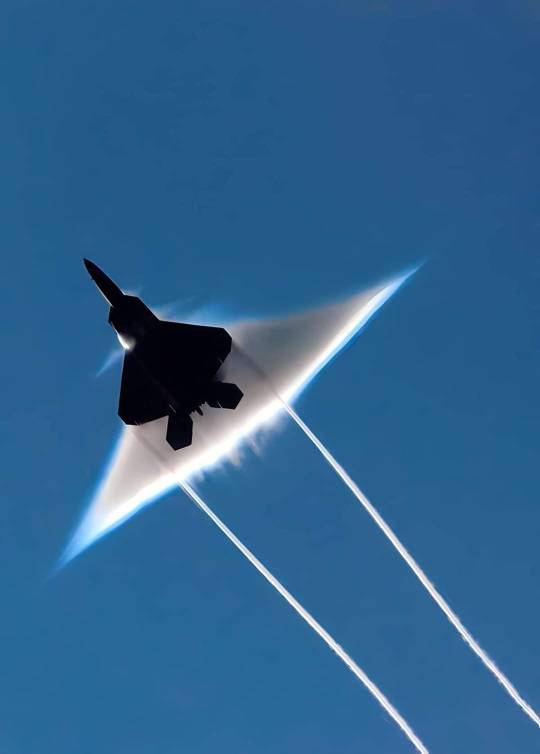
F22 Raptor at transonic speeds, touching the "supersonic" speed of sound. Air friction with aircraft moving through it creates heat and condensate cool humid air to visible water vapor.
16 notes
·
View notes
Photo







‘Stargazer,’
The 12-seat Stargazer will be able to travel at Mach 9 – nine times the speed of sound at 11,100 km/h – and make the journey between Tokyo and New York in a single hour. Or Sydney to New York in under an hour and 30 minutes assuming a distance of 9,935.04 miles (15,988.90 km).
The Stargazer will take off using regular jet engines, before reaching a cruising altitude of 170,000 feet where it can switch over to its rotating-detonation engine rockets and hit full speed.
Courtesy Venus Aerospace
#art#design#concept#render#stargazer#supersonic#private jet#jetset#Jetsetter#Business jet#flyingpalace#flyingprivate#venus aerospace#jet#speed#luxurylifestyle
14 notes
·
View notes
Link
The article titled "General Dynamics F-16 Fighting Falcon" by Peter Suciu, published on July 20, 2024, explores the storied history and evolution of the American-made F-16 Fighting Falcon. Originally a product of General Dynamics, now produced by Lockheed Martin, the F-16 was developed during the 1970s as a lightweight, multirole fighter. It saw its first official flight in 1974 and has since been adopted by numerous countries globally, notably Israel, and recently pledged to Ukraine for its conflict with Russia. The aircraft's features include advanced cockpit designs, fly-by-wire controls, and a unique engine intake that ensures optimal performance. Over its service years, the F-16 has been engaged in various conflicts, from Middle Eastern engagements by Israeli forces to its extensive use by the U.S. Air Force during Operation Desert Storm. This versatile and durable aircraft, known for both its air-to-air and air-to-ground capabilities, continues to serve as a force multiplier around the world while also being a prominent figure in peacekeeping missions and air shows.
#General Dynamics#F-16 Fighting Falcon#multirole fighter aircraft#U.S. Air Force#fighter jets#aviation technology#combat missions#aerial dogfights#air-to-air combat#air-to-ground attack#General Dynamics F-16#avionics#supersonic speed#maneuverability#radar systems#weapons systems#lightweight design#military innovation#aerospace engineering#combat performance#tactical flexibility.
0 notes
Text

Celebrating 60 Years of the XB-70 Valkyrie Mach 3 Super Bomber
September 16, 2024 Military Aviation
XB-70 60th anniversary
The lone XB-70 Valkyrie is photographed as it is moved to a new building at the Museum of the United States Air Force located at Wright-Patterson Air Force Base, Ohio, on Oct. 27, 2015. Beginning in the late 1950s and continuing through the mid-1960s, tests were conducted at Arnold Air Force Base, Tenn., headquarters of Arnold Engineering Development Complex, in support of the XB-70 program. The now-retired aircraft made its first flight on Sept. 21, 1964. (U.S. Air Force photo by Will Haas)
The experimental legacy of the iconic XB-70 Valkyrie, which made its first flight on Sept. 21, 1964.
An article published on the U.S. Air Force website commemorates the 60th anniversary of the first flight of the legendary XB-70 Valkyrie, a supersonic bomber that captured the imagination of aviation enthusiasts and engineers alike. Known for its sleek and futuristic design, the XB-70 remains a symbol of the experimental and ambitious spirit of Cold War-era aircraft development. Despite only two prototypes ever being built, the aircraft has left an indelible mark on military aviation history.
The XB-70 Valkyrie was originally conceived in the 1950s as a high-speed, high-altitude bomber for the U.S. Air Force Strategic Air Command. At a time when technological advancements were rapidly accelerating, the U.S. Air Force sought a bomber capable of flying faster and higher than the B-52 Stratofortress, its workhorse of the era (as well as the backbone of the strategic bomber fleet today and for some more decades in the future…).
With a planned cruise speed of Mach 3 and an operating altitude of 70,000 feet, the XB-70 promised to outpace and outmaneuver Soviet defenses, which were a growing concern during the Cold War.
One of the most remarkable features of the XB-70 was its ability to “ride” its own shockwave, a design innovation that allowed it to maintain stability and performance at supersonic speeds. The Valkyrie’s iconic delta wing, combined with six powerful jet engines, gave it an exotic and striking appearance, making it one of the most visually distinctive aircraft ever built. Its outer wing panels were hinged, allowing them to be lowered during flight to optimize the aerodynamic performance at high speeds.

The XB-70 looks like an alien spacecraft from this angle. (Image credit: USAF)
The article highlights the crucial role played by Arnold Engineering Development Complex (AEDC) in the development of the XB-70.
The testing of the Valkyrie’s engines, aerodynamics, and other key components began at Arnold Air Force Base in the late 1950s, well before the first prototype took shape. The AEDC’s facilities were instrumental in pushing the boundaries of what was possible in aviation at the time. One of the earliest tests involved the air-breathing engine nozzles proposed for the XB-70 in March 1958. This was followed by extensive wind tunnel testing of scale models of the Valkyrie, where the aerodynamic characteristics of bombs dropped from the aircraft were also studied.

A technician makes adjustments to a scale model of the XB-70 Valkyrie before aerodynamic characteristics related to the aircraft are evaluated in Tunnel A of the von Kármán Gas Dynamics Facility at Arnold Air Force Base, Tenn., headquarters of Arnold Engineering Development Complex, in 1959. Beginning in the late 1950s and continuing through the mid-1960s, tests were conducted at Arnold Air Force Base, Tenn., headquarters of Arnold Engineering Development Complex, in support of the XB-70 program. Only two Valkyries were built, with only one of the pair remaining. The now-retired aircraft made its first flight on Sept. 21, 1964. (U.S. Air Force photo)
Development continued into the early 1960s, with the YJ93 turbojet engines, designed specifically for the XB-70, undergoing rigorous testing at AEDC. These engines were critical to the Valkyrie’s ability to reach and maintain supersonic speeds. However, in 1961, before the first prototype was even completed, the bomber program was canceled due to budget constraints and concerns over the bomber’s vulnerability to Soviet surface-to-air missiles, which had rapidly advanced in capability.
Although the XB-70 bomber program was terminated, the Valkyrie found new life as a research aircraft.
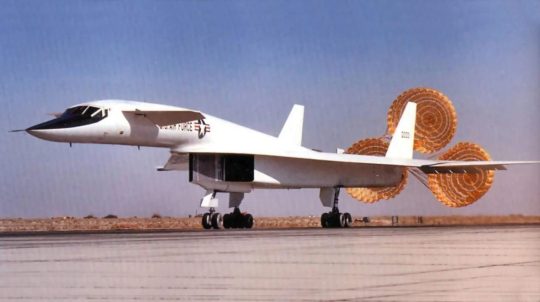
Three drag chutes were needed to slow down the landing roll of the XB-70. (Image credit: Reddit edit The Aviationist)
The U.S. Air Force recognized the potential of the aircraft to serve in aerodynamics and propulsion research, particularly in the study of large supersonic aircraft. Consequently, two XB-70 prototypes were completed, and testing continued, including at AEDC, where a scale version of the XB-70 inlet, paired with a full-scale YJ93 engine, was tested in August 1962.
XB-70A number 1 (62-001) made its first flight from Palmdale to Edwards Air Force Base, CA, on Sept. 21, 1964. The second XB-70A (62-207) made its first flight on Jul. 17, 1965. The latter differed from the first prototype for being built with an added 5 degrees of dihedral on the wings as suggested by the NASA Ames Research Center, Moffett Field, CA, wind-tunnel studies.

North American XB-70A Valkyrie on the taxiway with a cherry picker. Photo taken Sept. 21, 1964, the day of the first flight. Note: the left main landing gear brakes locked during the landing causing two tires to blow. (U.S. Air Force photo)
While the 62-001 made only one flight above Mach 3, because of poor directional stability experienced past Mach 2.5, the second XB-70, achieved Mach 3 for the first time on Jan. 3, 1966 and successfully completed a total of nine Mach 3 flights by June on the same year.
However, the Valkyrie program suffered a devastating setback in June 1966 when the second prototype was destroyed in a midair collision with an F-104N Starfighter during a photoshoot. This tragic accident resulted in the loss of key personnel and diminished the future prospects of the Valkyrie.

North American XB-70A Valkyrie just after collision. Note the F-104 is at the forward edge of the fireball and most of both XB-70A vertical stabilizers are gone. (U.S. Air Force photo)
Despite this setback, the remaining XB-70 continued to serve as a valuable research platform. In 1967, the U.S. Air Force transferred the aircraft to NASA, where it was used in support of the National Supersonic Transport (SST) program. NASA employed the XB-70 to investigate supersonic flight operations, but the SST program was eventually canceled in 1971, marking the end of America’s efforts to develop a commercial supersonic airliner.
The XB-70 Valkyrie’s final flight took place on Feb. 4, 1969, when it was flown to Wright-Patterson Air Force Base in Ohio. There, the aircraft was placed on display at what is now the National Museum of the United States Air Force, where it remains a testament to the audacious engineering and design of its era.
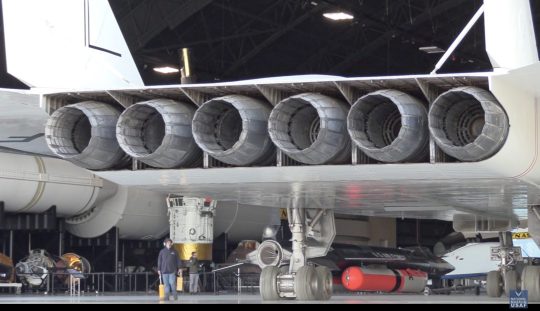
A view of the six massive afterburners on the XB-70 Valkyrie as the aircraft is towed out of its display hangar temporarily for museum maintenance. (Photo: National Museum of the U.S. Air Force via YouTube)
Though only two XB-70s were ever built, their legacy endures: the aircraft’s pioneering advancements in aerodynamics, engine performance, and high-speed flight helped shape the future of supersonic aviation.
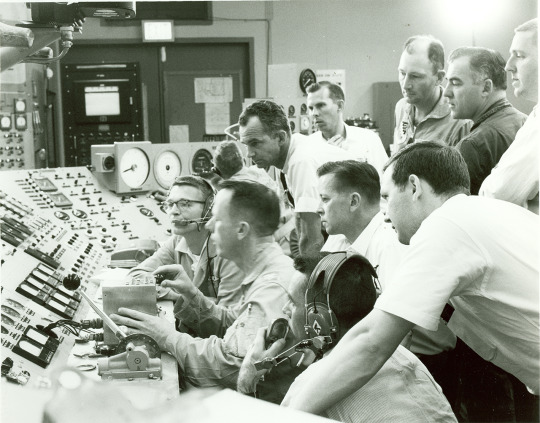
Pilots who were to perform the first test flights for the XB-70 Valkyrie operate the YJ93 engine, the powerplant of the XB-70, while the engine is tested under simulated flight conditions in May 1964 in the Rocket Test Facility at Arnold Air Force Base, Tenn., headquarters of Arnold Engineering Development Complex. This was done to help the pilots familiarize themselves with the performance characteristics of the engine prior to the first XB-70 flight, which occurred on Sept. 21, 1964. Beginning in the late 1950s and continuing through the mid-1960s, tests were conducted at Arnold AFB in support of the XB-70 program. Only two Valkyries were built, with only one of the pair remaining. (U.S. Air Force photo)
The first prototype made a total of 83 flights, amassing 160 hours and 16 minutes of flight time, while the second prototype completed 46 flights, totaling 92 hours and 22 minutes.
The XB-70 Valkyrie, with its daring design and groundbreaking capabilities, continues to captivate aviation enthusiasts and engineers. Its story, though short-lived in terms of operational use, highlights the relentless pursuit of innovation that defines the U.S. Air Force and its engineering partners. Sixty years after its first flight, the Valkyrie remains an iconic symbol of the bold ambitions of Cold War-era aviation.
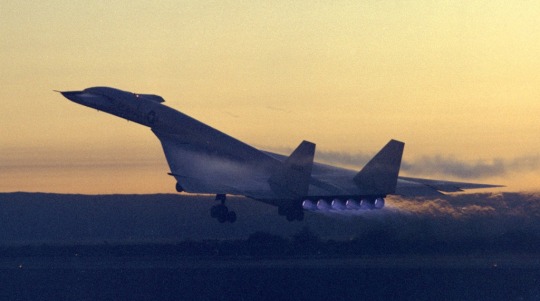
XB-70 Night Take-off. (Photo via Air Force Materiel Command History Office)
About David Cenciotti
David Cenciotti is a journalist based in Rome, Italy. He is the Founder and Editor of “The Aviationist”, one of the world’s most famous and read military aviation blogs. Since 1996, he has written for major worldwide magazines, including Air Forces Monthly, Combat Aircraft, and many others, covering aviation, defense, war, industry, intelligence, crime and cyberwar. He has reported from the U.S., Europe, Australia and Syria, and flown several combat planes with different air forces. He is a former 2nd Lt. of the Italian Air Force, a private pilot and a graduate in Computer Engineering. He has written five books and contributed to many more ones.
@TheAviationist.com
118 notes
·
View notes
Text

What is the reason for modern aircraft not using swept back wings like the F-14 Tomcat?
The main reason modern aircraft do not use swept-back wings like the F-14 is due to the advancements in aerodynamics and materials science. Swept-back wings were initially developed to delay the onset of shock waves and reduce drag at transonic and supersonic speeds.
While this design was effective for the F-14, it came with trade-offs, particularly in terms of complexity and weight. The variable-sweep mechanism added significant weight and maintenance requirements, which are less desirable in today's cost-conscious and efficiency-driven aviation industry.
Also, modern aircraft benefit from advanced computational fluid dynamics (CFD) and wind tunnel testing, allowing engineers to optimize wing shapes for specific performance criteria without relying on variable-sweep designs. This has led to the development of more efficient fixed-wing designs that can achieve similar or even superior performance across a broader range of speeds. For example, the F-22 Raptor and F-35 Lightning II utilize fixed-wing designs with advanced aerodynamics and stealth capabilities, making them highly effective in modern combat scenarios.
Modern fighter jets are designed to be multi-role platforms, capable of performing a wide range of missions from air superiority to ground attack. This versatility demands a design that can perform well in various flight regimes, from low-speed, high-angle-of-attack maneuvers to high-speed intercepts. Fixed-wing designs, coupled with advanced flight control systems, provide the necessary performance and flexibility without the added complexity of variable-sweep wings.
The emphasis on stealth technology in modern military aviation has influenced wing design. Swept-back wings, while beneficial for high-speed flight, can create larger radar cross-sections, making the aircraft more detectable. Modern stealth aircraft are designed with smooth, continuous surfaces and internal weapon bays to minimize raddar signatures, which is more easily achieved with fixed-wing designs.
74 notes
·
View notes
Note
I may be getting ahead of myself. i might lose interest, no promises. But. I’ve been learning blender, and I want to animate a fly by of him in an Antarctic glacial field then hopefully a loop de loop through a glacial arch.
Easiest will be rendering the scene itself (and downloading Starscream bc I found a good model of his jet online… as well as Starscream himself lol).
Year end project likely. or at least summer.
Initially, I considered Skyfire in it (bc Antarctic), but I'll need to model his shuttle itself and I'm too much of a beginner for that.
A massive IF but if i were to somehow add Skyfire, or heck his trinemates (2yr project lol) then what IRL jet modes do you think they would be?
Again NO PROMISES!! But it’s something I want to try
A lot of people have different opinions on what the trine’s alts are and different continuities have different alts as well. For example, the original G1 cartoon had Starscream’s alt mode as the F-15 Eagle, the F-16 Fighting Falcon in Prime, and the F-22 Raptor in Bayverse. It’s common though that they’re all some sort of fighter, aka a multi-role military jet more specifically used in dog fights.
When is comes to Thundercracker and Skywarp however, they never really specify their alts but I’ve seen several theories.
Personally, I like to believe that Thundercracker is an F-35 Lightning. The F-35 Lightning is a supersonic aircraft capable of electronic warfare and while it’s fantastic in dog fights it’s good for reconnaissance too. It also failed its landing tests eight times during its development and in early development testing showed it developed premature cracks(of which these issues have since been ironed out of course), which aids my reasoning to assign this to Thundercracker.
However! For Skywarp I like to take a twist and make him an MiG-25 Foxbat, one of the faster fighter jets. The MiG-25 Foxbat is capable of reaching speeds up to Mach 3.2, only limited by the possibility of over heating engines, however it does hold the record for highest altitude reached.
I’ve never thought about Skyfire’s alt, of which I’m assuming he would stay a cybertronian shuttle, but let’s say he did have an Earth variant alt mode. The only logical choice would probably be a An-225 Mriya(also known as the An-225 Dream). This is an outsize cargo aircraft, developed during the 1980’s. Only one was ever built and it was sadly dismantled and destroyed in 2022 on February 27th.
But that’s my take on alt their alt modes, you may not find the correct models for your project but then again we all take creative liberties when it comes to the wildfire of transformers. Just make sure you’re still having fun with the project! :D
Also I didn’t mean to ramble lol I could’ve just given you a list but I love aircrafts <3
22 notes
·
View notes
Text
So the dragons have two phases of flight, a low speed phase and a high speed phase. Low speed is as you imagine - a flapping flight for landing, take offs, manoeuvring in tight spaces and so on. Transitioning into the high speed phase is something new riders must rigorously train for before they're qualified. The wings are fixed, while the jet rune compresses and accelerates air past itself, forcing air to flow over the wings to generate lift. The location of the jet rune varies but for maximum manoeuvrability it should lie along the axis of the body, usually one on the underside or two on either side of the ribcage. The further out onto the wings the rune is located, the flight becomes more stable at the cost of manoeuvrability and additional issues like asymmetric thrust potentially becoming an issue. With the right rune and wing morphology, supersonic speeds are achievable. Dragons
51 notes
·
View notes
Text
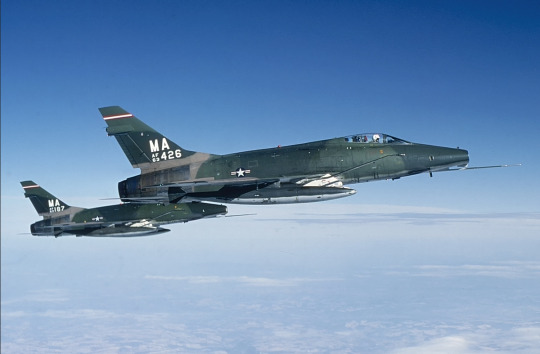
"Super Sabres" - February, 1977
Introduced in September 27, 1954 "The Hun" was the first of the Century Series jet fighters, it was also the first United States Air Force fighter capable of supersonic speed in level flight
#USAF#North American Aviation#F-100#Super Sabre#The Hun#Century series fighter#military#aviation#fighter#aircraft#jet
107 notes
·
View notes
Text
The One-Punch Man Manga Returns in Two Days
They call him Demon Cyborg, but not because that's the sort of monster he can fight: if they meant to call him that, they'd have called him Demon-Slaying Cyborg. They call him that because he's like a demon on day release from Hell, and they're very, very glad that he has it in for monsters.
He has two basic modes. The first: being all polite and domestic.

The second…yes, that's him about to jump out of a jet fighter without a parachute because he's seen a monster. He hits trouble at supersonic speeds and lets the pieces land where they may.

Fortunately for him, he has the strongest pick-up crew in the world.
27 notes
·
View notes
Text
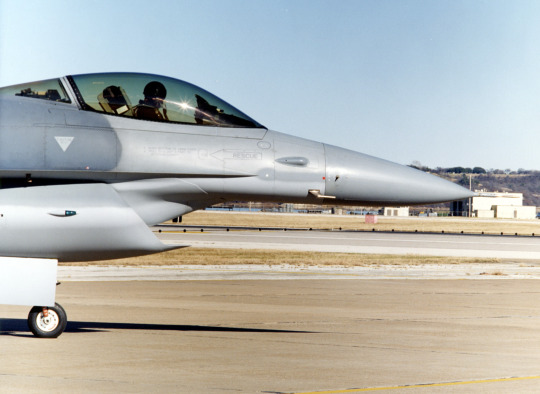

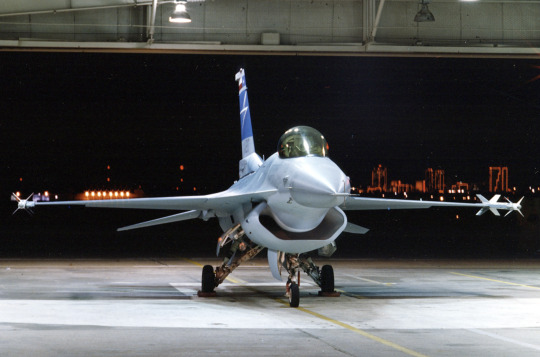
Unusual F-16s: Diverterless supersonic inlet ‘Bump Rider’ (1996)
Jet engines cannot handle supersonic airflow, which considering fighters go at twice the speed of sound is a problem. So the airflow is slowed down before it enters the engine. There are various ways to do this and they are heavy, require maintenance and tend to be highly visible to enemy radars. The diverterless supersonic inlet, however, is an elegant and clever solution.
It is simply a bump that slows down the airflow, while also blocking enemy radar’s view of the engine compressor face (a highly reflective surface). It was used on the F-35 Lightning with and achieved a 30% weight saving over the traditional solution.
62 notes
·
View notes
Text
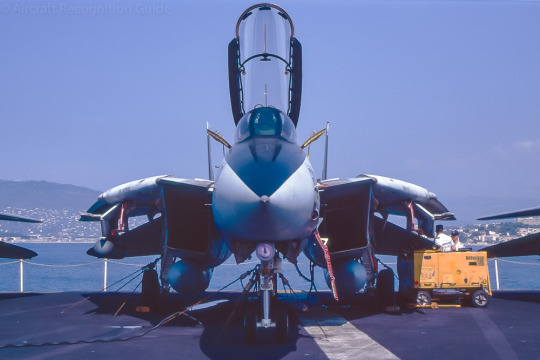
The F-14 Tomcat
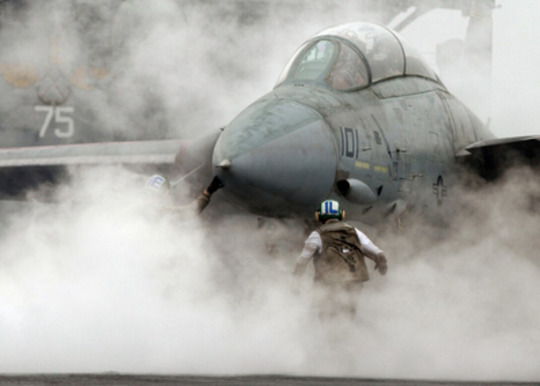
The F-14 Tomcat, an iconic American supersonic fighter jet, gained fame for its swing-wing design and role as a carrier-based interceptor. Developed by Grumman for the US Navy, it entered service in 1974 and was retired in 2006.
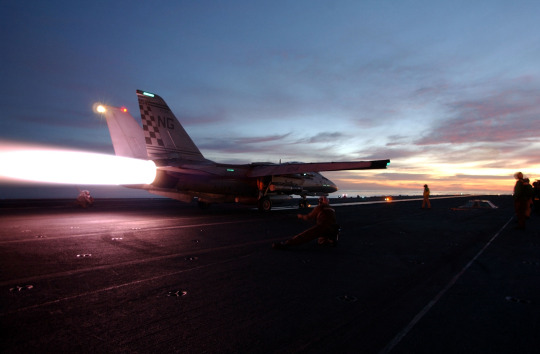
The F-14 Tomcat garnered notable performance records during its illustrious service. In 1974, an F-14A set a world speed record, reaching 1,606.342 miles per hour (2,585.086 kilometers per hour) over a 500-kilometer closed-circuit course. Its remarkable speed capabilities were underscored by its ability to exceed Mach 2.
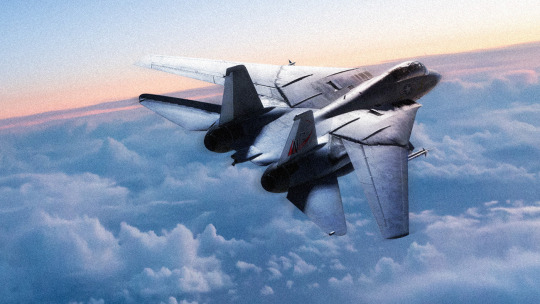
In combat, the F-14 demonstrated exceptional effectiveness, participating in pivotal military operations such as the Gulf War and Operation Enduring Freedom. Its swing-wing design and Pratt & Whitney TF30 turbofan engines endowed it with agility and versatility, enabling precise maneuvering and long-range engagements.
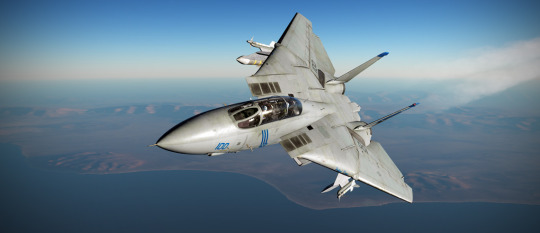
Armed with radar-guided missiles and a powerful radar system, it was designed for air superiority and fleet defense. The Tomcat played a crucial role in various conflicts, including the Gulf War. Its advanced avionics and long-range capabilities made it a formidable adversary.
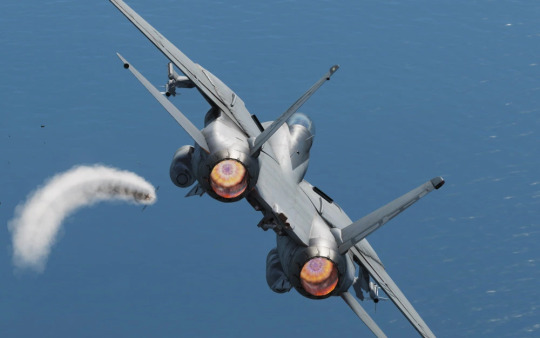
The F-14's advanced radar systems, including the Hughes AN/AWG-9 and later the AN/APG-71, facilitated multi-target tracking and engagement, particularly with the AIM-54 Phoenix missile system.
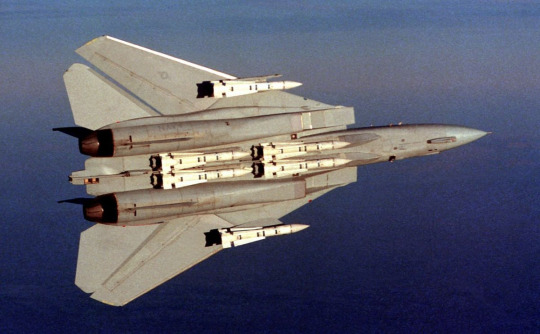
Beyond its performance in flight, the F-14 left an indelible mark on popular culture, immortalized in the film "Top Gun." Its enduring legacy as a symbol of American military power and aviation excellence continues to captivate enthusiasts and historians alike.
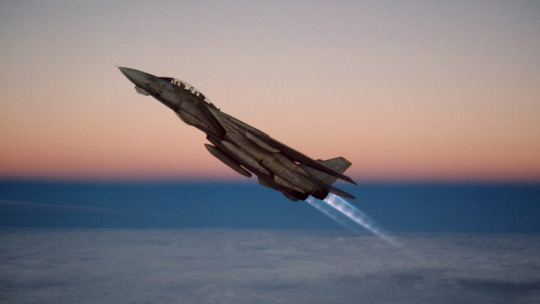
Though retired, its legacy endures as a symbol of naval aviation prowess and technological innovation.
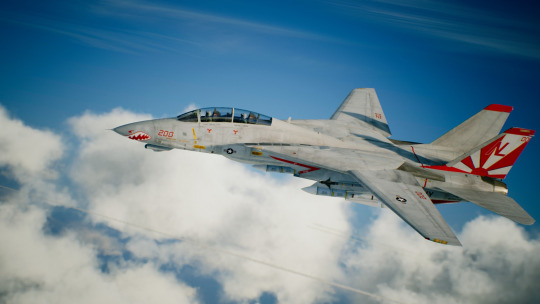
146 notes
·
View notes
Text

Twin Fairy light mechs in high-speed mode, skimming over grassy flats. While capable of flight at higher altitudes, fairies are much smaller than conventional jets and aren't capable of supersonic flight. Their small size means they don't pack the sophisticated detection and countermeasure suites vital for aerial combat.
As surface combatants however, they outpace other ground vehicles when in high speed mode, and are capable of rapid strikes from their arm-mounted lasers. As a battle progresses and Choke fills the combat zone, Fairies will switch to mech form, pulling a close-quarters weapon from their central hull. Usually this will be a snub-cannon or a short-focus laser.
76 notes
·
View notes
Link
The article, authored by Peter Suciu, chronicles the evolution and significance of the McDonnell F-101 Voodoo, an advanced military aircraft developed during the Cold War. Originally designed as a long-range escort for Strategic Air Command bombers, the F-101 was adapted into a long-range interceptor, nuclear strike aircraft, and tactical reconnaissance plane. Notable for its speed and altitude capabilities, the Voodoo's design stemmed from the XF-88 prototype. The article highlights its various configurations, including the single-seat F-101A, the two-seat F-101B, and the RF-101 reconnaissance models. It discusses its operational roles and deployments by the United States Air Force, Canadian Air Defence Group, and Taiwanese pilots, particularly during crises like the Cuban Missile Crisis and the Vietnam War. The Voodoo’s legacy is preserved in numerous museums across the globe.
#McDonnell F-101 Voodoo#Cold War#United States Air Force#Strategic Air Command#tactical reconnaissance#interceptor aircraft#nuclear deterrence#supersonic speeds#Vietnam War#aerial refueling#RF-101 variant#F-101B variant#radar systems#McDonnell Aircraft Corporation#Mach 2#photo-reconnaissance missions#fighter jet#1950s aviation technology#military aviation history#jet aircraft development.
0 notes
Text
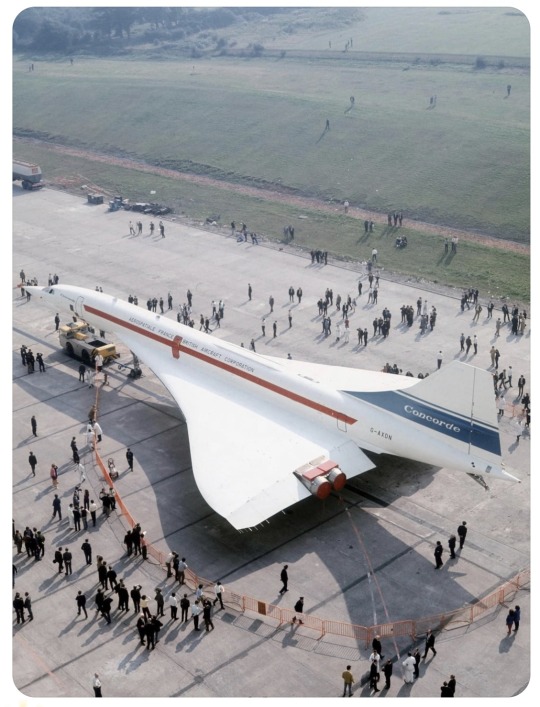
The Concorde supersonic jet inaugural flight in 1976. The aircraft could fly from to London to New York in just over 3 hours, at speeds up to Mach 2. It was retired in 2003 due to financial viability and safety concerns.
#concorde#aesthetic#vintage#old school cool#70s style#70s aesthetic#travel#adventure#aircraft#airplane#70s design#supersonic
64 notes
·
View notes